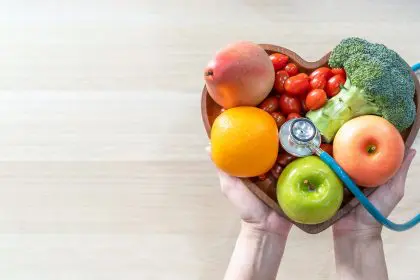Managing diabetes in children requires careful attention to snacks and treats. While traditional sugary options can cause problematic blood sugar spikes, numerous alternatives offer both nutrition and satisfaction. Here are seven kid-tested treats that balance taste with health.
Fresh fruit popsicles
Homemade popsicles provide a refreshing, diabetes-friendly treat. Blending low-glycemic fruits like berries and kiwi creates naturally sweet options that won’t dramatically affect blood sugar levels.
Add Greek yogurt or unsweetened almond milk for protein and creaminess. The combination of protein and fiber helps slow digestion, maintaining stable blood sugar while delivering essential nutrients. Research shows that combining fruits with protein sources can reduce post-snack blood sugar spikes by up to 40%.
Greek yogurt berry bowls
Greek yogurt offers significant protein and probiotics with fewer carbohydrates than regular yogurt. Fresh berries add natural sweetness without excessive sugar. Studies show protein-rich snacks help maintain steady glucose levels in children with diabetes.
Smart additions
- Sprinkle cinnamon for flavor and potential blood sugar benefits
- Add ground flaxseed for omega-3 fatty acids
- Mix in chopped nuts for extra protein and healthy fats
- Consider adding a sugar-free granola for crunch
- Experiment with different berry combinations for variety
The American Diabetes Association recommends choosing yogurt with at least 10 grams of protein per serving for optimal blood sugar management.
Crunchy veggie and hummus plates
While not traditionally sweet, many children enjoy satisfying crunch. Colorful vegetables paired with hummus provide fiber, protein and healthy fats – key nutrients for blood sugar management.
Kid-friendly combinations
- Rainbow bell pepper strips
- Baby carrots
- Cucumber wheels
- Cherry tomatoes
- Sugar snap peas
- Jicama sticks for extra crunch
- Celery boats filled with hummus
Pediatric nutritionists recommend offering at least three different colored vegetables to increase appeal and nutrient variety.
Apple and nut butter pairs
This classic combination works well for children with diabetes. Apples offer natural sweetness with a low glycemic impact, while nut butters provide protein and healthy fats that help prevent blood sugar spikes.
Choose unsweetened nut butters and add cinnamon for extra flavor. Research indicates cinnamon may help improve insulin sensitivity when consumed regularly. Studies suggest that adding just 1/4 teaspoon of cinnamon can improve post-meal blood sugar levels.
Creative serving ideas
- Apple “sandwiches” with nut butter between thin slices
- Apple “nachos” drizzled with warm nut butter
- Apple rings topped with nut butter and seeds
- Spiral-cut apples for fun presentation
- Nut butter dip with apple slices for dunking
Rice cake mini-meals
Transform plain rice cakes into appealing treats by adding protein-rich toppings. Cottage cheese provides substantial protein while keeping carbohydrates low.
Building better snacks
- Start with whole grain rice cakes
- Add low-fat cottage cheese
- Top with low-sugar berries
- Sprinkle with vanilla or cinnamon
- Add a drizzle of sugar-free honey alternative
- Consider cream cheese alternatives for variety
Nutritionists recommend choosing rice cakes with at least 2 grams of fiber per serving to help slow digestion.
Dark chocolate options
For chocolate lovers, dark varieties containing at least 70% cocoa offer satisfaction with less sugar. Studies show dark chocolate’s flavonoids may improve insulin sensitivity when consumed in moderation.
Smart serving tips
- Limit portions to one or two small squares
- Pair with nuts for protein and healthy fats
- Choose varieties with minimal added sugars
- Look for brands specifically marketed as low-sugar
- Consider sugar-free options made with stevia
- Try chocolate-covered almonds for portion control
Research indicates that consuming up to 1 ounce of dark chocolate daily may have beneficial effects on blood sugar control.
Nutrient-rich smoothies
Blending fruits with healthy fats creates satisfying treats that won’t cause rapid blood sugar changes. The combination of fiber, protein and healthy fats helps slow digestion.
Basic recipe
- ½ banana
- ½ avocado
- 1 cup spinach
- 1 cup unsweetened almond milk
- Optional: 1 tablespoon chia seeds
- Ice cubes for thickness
Variations for variety
- Berry blast: Add mixed berries instead of banana
- Green machine: Include cucumber and mint
- Tropical twist: Use coconut milk and mango
- Protein power: Add sugar-free protein powder
- Nutty delight: Include natural nut butter
Guidelines for success
Managing treats for children with diabetes requires attention to timing and portions. Work with healthcare providers to understand individual needs and tolerance levels.
Key principles
- Monitor portions carefully
- Test blood sugar before and after new treats
- Keep detailed records of responses
- Adjust serving sizes based on activity levels
- Consider timing with insulin doses if prescribed
- Watch for individual food sensitivities
- Plan treats around physical activity
Smart scheduling
- Offer treats between meals to prevent blood sugar dips
- Time snacks with medication schedules
- Consider post-exercise treat timing
- Plan ahead for special occasions
- Keep emergency snacks available
Looking forward
With creative approaches and attention to nutrition, children with diabetes can enjoy satisfying treats while maintaining healthy blood sugar levels. These options provide building blocks for developing lifelong healthy eating habits.
Remember that individual responses to foods vary. Work closely with your child’s healthcare team to develop an eating plan that provides both good nutrition and enjoyment. Regular monitoring helps identify which treats work best for your child’s specific situation.
Recent studies show that children who learn to make healthy food choices early in their diabetes journey tend to maintain better blood sugar control throughout their lives. By making treats both nutritious and appealing, parents can help children develop positive relationships with food while managing their condition effectively.
This story was created using AI technology.














